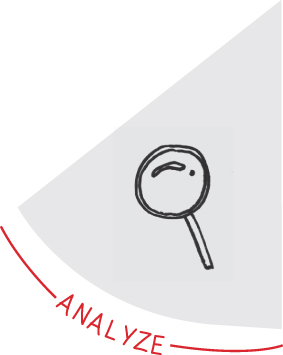Chapter FiveConduct Analyses

How you go about gathering facts and conducting analysis to test your hypotheses often makes the difference between good and bad problem solving, even when the earlier steps have been followed carefully. Good problem solvers have a toolkit at their disposal that helps them work efficiently, starting with heuristics and rules of thumb to understand the direction and magnitudes of relationships that allows them to focus attention on the most important issues. They don't jump right into building giant models until they have a clear understanding of whether and where complex tools are required.
The analysis stage is critical to the objectivity of your problem solving. There are many jokes about torturing the facts until they speak the truth you want to hear. There was even an old New Yorker cartoon that showed a person reaching into a filing cabinet with drawers marked “His facts. Her facts. Your facts.”—and this was well before the advent of fake news. Following a structured problem approach, where we use good analytic techniques to pressure test our hypotheses and good team processes to limit bias, allows us to avoid torturing the facts.
In this chapter, we focus on how to do powerful analyses quickly and efficiently, starting with heuristics, shortcuts, and rules of thumb. We illustrate how you can structure and resolve many analytic issues you face ...
Get Bulletproof Problem Solving now with the O’Reilly learning platform.
O’Reilly members experience books, live events, courses curated by job role, and more from O’Reilly and nearly 200 top publishers.

